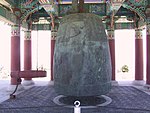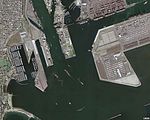The Sunken City
1929 in CaliforniaAccuracy disputes from March 2022Beaches of Los Angeles County, CaliforniaLandslides in 1929Landslides in the United States

The Sunken City is the site of a natural landslide which occurred in the Point Fermin area of the San Pedro neighbourhood of Los Angeles, starting in 1929. A slump caused several beachside homes to slide into the ocean. The development of cliffside homes and exclusive bungalows was established in the 1920s by George H. Peck to attract people who wanted to live with a view of the Pacific Ocean. Experts investigating the landslide said that the ground was shifting at a rate of 11 inches (280 mm) per day. The landslide occurred at the southern tip of San Pedro, sending nearly 40,000 square feet (3,700 m2) into the Pacific Ocean. The area is still visited by sightseers.
Excerpt from the Wikipedia article The Sunken City (License: CC BY-SA 3.0, Authors, Images).The Sunken City
Alley 84458, Los Angeles
Geographical coordinates (GPS) Address Nearby Places Show on map
Geographical coordinates (GPS)
| Latitude | Longitude |
|---|---|
| N 33.705 ° | E -118.289 ° |
Address
Sunken City
Alley 84458
90733 Los Angeles
California, United States
Open on Google Maps










